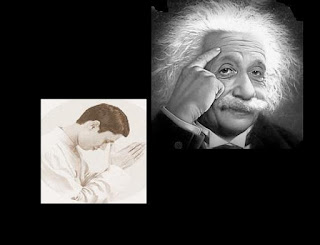At
least 3 million people died from starvation and malnutrition during a famine in
the Indian province of Bengal in 1943.
When
British Prime Minister David Cameron expressed regret this week for the
Jallianwala Bagh massacre of 1919 in Amritsar (in which at least 400 unarmed
Indian men, women and children were massacred by British soldiers), he omitted
any reference to Britain’s role in a far greater tragedy of colonial India: the
Bengal famine of 1943. Seventy years ago, at least 3 million people died from
starvation and malnutrition during a famine in the Indian province of Bengal - a partly man made disaster that has been largely forgotten by the world
beyond northeastern India.
A
complex confluence of malign factors led to the catastrophe, which occurred
with the world at war, including, as Indian parliamentary member and leading
agricultural scientist M. S. Swaminathan cited in the Hindu newspaper, the Japanese
occupation of neighboring Burma and damage to the local rice crop due to tidal
waves and a fungal disease epidemic. Swaminathan also blamed “panic purchase
and hoarding by the rich, failure of governance, particularly in relation to
the equitable distribution of the available food grains, disruption of
communication due to World War II and the indifference of the then UK government to the plight of the starving people of
undivided Bengal.”
But
while famines were not uncommon in India throughout history, largely because of periodic
droughts or monsoons, the tragedy in Bengal had the
unmistakable hand of man in it, making it an even greater calamity of recent
global history. In the prior year, 1942, when Japan seized Burma, an important rice exporter, the British bought up
massive amounts of rice but hoarded it. The famine only ended because Bengal thankfully delivered a strong rice harvest by 1944.
Dr.
Gideon Polya, an Australian biochemist, has called the Bengal famine a man made “holocaust.” “The British brought an unsympathetic
and ruthless economic agenda to India,” he wrote. Polya further noted that the “loss of
rice from Burma and ineffective government controls on hoarding and profiteering
led inevitably to enormous price rises. Thus, it can be estimated that the
price of rice in Dacca (East
Bengal) increased about
four-fold in the period from March to October 1943. Bengalis having to purchase
food (e.g landless laborers) suffered immensely. Thus, it is estimated that
about 30 percent of one particular laborer class died in the famine.” Many
observers in both modern India and Great Britain blame Winston Churchill, Britain's inspiring wartime leader at the time, for the
devastation wrought by the famine.
In
2010, Bengali author Madhusree Mukherjee wrote a book about the famine called “Churchill's
Secret War,” in which she explicitly blamed Churchill for worsening the
starvation in Bengal by ordering the diversion of food away from
Indians and toward British troops around the world. Mukherjee’s book described
how wheat from Australia (which could have been delivered to starving
Indians) was instead transported to British troops in the Mediterranean and the Balkans. Even worse, British colonial
authorities (again under Churchill’s leadership) actually turned down offers of
food from Canada and the U.S. “If it was someone else other than Churchill, I
believe relief would have been sent, and, if it wasn’t for the war, the famine
wouldn’t have occurred at all,” Mukherjee told Inter Press Service.“Churchill’s
attitude toward India was quite extreme, and he hated Indians, mainly because he knew India couldn’t be held for very long. One cannot escape
the really powerful, racist things that he was saying. It certainly was
possible to send relief but for Churchill and the War Cabinet that were
hoarding grain for use after the war.” Churchill’s
hostility toward Indians has long been documented. Reportedly, when he first
received a telegram from the British colonial authorities in New Delhi about the rising toll of famine deaths in Bengal, his reaction was simply that he regretted that nationalist leader
Mahatma Gandhi was not one of the victims. Later at a War Cabinet meeting, Churchill
blamed the Indians themselves for the famine, saying that they “breed like rabbits.”
His attitude toward Indians was made crystal clear when he told Secretary of
State for India Leopold Amery: "I hate Indians. They are a beastly people
with a beastly religion. “According to the BBC, Mukherjee said that Cameron
should have apologized for the Bengal famine on behalf of his predecessor in Downing Street from decades ago - indeed, even former Prime
Minister Tony Blair apologized for Britain's culpability in the Irish potato famine of the 1840s.
Outside of India, the Bengal famine of 1943 might only be known through the
efforts of Indian filmmaker Satyajit Ray, who directed a movie in 1973 called "Ashani
Sanket" (“Distant Thunder”), based on a novel by the same name by Bengali
author Bibhutibhushan Bandyopadhyay.
